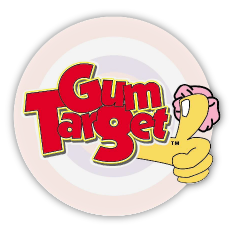Gum-Removal Arsenal
Freeze sprays and refrigerant gels are designed to tackle the issue of gum adhesiveness by quickly chilling the gum. This change in temperature makes it much easier to remove the gum mechanically. What stands out about these products is their rapid action, which is particularly valuable when addressing gum deposits in high-traffic areas. They’re straightforward to use and effective on many surfaces, though care must be taken to avoid damage to less resilient materials.
Solvent-based removers offer a different approach by employing chemicals to break down the gum’s sticky composition. Their strength lies in the ability to dissolve even the most stubborn gum remnants. Multiple types of surfaces can be cleaned with solvents, and they are especially useful over larger areas. They come with their considerations. There’s potential harm from inhaling fumes or damage to surfaces, necessitating careful handling and a well-ventilated environment.
Steam cleaners are a versatile contender in the gum-removal. Through the use of high-temperature steam, they soften and lift gum from surfaces without the need for additional chemicals. This eco-friendly option diminishes the risk of environmental harm. Steam cleaners require access to electricity and, for optimal use, might necessitate a basic operational understanding.
Biodegradable liquid formulas provide an environmental advantage, often being formulated from natural ingredients. These cleaners are geared toward safety, both for the user and the surfaces they encounter, making them a prudent choice for various settings. While they may not act as quickly as other options, the benefit of avoiding harsh chemicals can outweigh the need for patience and possible reapplication.
 Mechanical Gum-Removal Tools
Mechanical Gum-Removal Tools
One principal advantage of mechanical tools is their sustainability. They do not require refills or produce waste in the form of used containers, as is common with sprays or solvents. This characteristic marks them as a cost-effective and environmentally friendly option within the array of gum-removal techniques.
Users can target specific gum spots with accuracy, making them suitable for delicate operations where surrounding areas must remain untouched. They are also versatile, as they are not bound by the limitations typically associated with chemical-based products, such as surface compatibility or toxicity concerns.
Removing gum in this manner can be labor-intensive, particularly when dealing with large quantities of aged, hardened gum residues. While it can be rewarding to successfully clean an area using these tools, it can also be time-consuming and physically demanding.
Care must be taken to use the right tool for the right surface to avoid scratches, gouges, or other types of damage that can be caused by the aggressive action required to remove gum.
Keeping them clean and in good condition ensures their longevity and effectiveness in future gum-removal tasks. Stainless steel options are often preferred for their durability and ease of maintenance.
Comparing the Top Products in Action
In selecting the appropriate product, one must weigh factors such as the type of surface affected, the size of the area, accessibility concerns, environmental considerations, and the desired balance between efficiency and effort. A historic site with delicate stonework might lean towards a gentle biodegradable formula or meticulous mechanical removal, while a modern commercial establishment with gum-splattered concrete might benefit from the robust action of a steam cleaner or a freeze spray.
Concrete is a robust material, often able to withstand more abrasive cleaning methods. Despite its rugged nature, certain precautions are still necessary to prevent surface damage. Products like freeze sprays and refrigerant gels are quite effective on concrete due to their ability to rapidly harden gum for scraping. The scraping process itself might pose a risk of scratching the concrete if not done carefully. Solvent-based removers exhibit impressive results on concrete by dissolving the gum. The efficiency of these products is notable, especially when dealing with large, difficult-to-remove remnants. These products can sometimes leave behind a residue or discoloration on the concrete, demanding thorough rinsing and neutralization after application to restore the appearance of the surface. Steam cleaners advocate for a thorough yet gentle method of gum removal on concrete. Their use of high-temperature steam to loosen gum reduces the likelihood of damaging the concrete, offering the additional benefit of not introducing chemicals to the environment.
Carpets represent a more challenging surface for gum removal due to their fibrous nature. Each product’s ability to remove gum without harming the carpet fibers or leaving a residue is paramount. Freeze sprays and refrigerant gels can be carefully used to target the gum on carpets, minimizing the impact on the surrounding area. The need for precise application is emphasized to avoid damaging a larger section of the carpet. Solvent-based removers have the potency to loosen gum from carpet fibers. This can be an advantageous quality when the gum has penetrated deeply into the pile. The potential risk of these solvents changing the color or texture of the carpet mandates a cautious approach, often involving testing the product on an inconspicuous area beforehand. Steam cleaners show versatility and safety, as the heat helps to free the gum from carpet fibers without saturating or discoloring the material. This method also offers a deeper cleaning for the area, addressing not just the gum but also other accumulated dirt and bacteria.
Upholstery comes with its own set of cleaning complexities due to the wide variety of fabrics and the need for gentle care. Freeze sprays and gels can be marginally applied on upholstery to harden the gum for removal. This method demands careful handling to avoid making the fabric too brittle and risk tearing. Solvents should be used with a heightened sense of caution on upholstery, as the chance of altering the fabric’s color or causing wear is significant. Spot testing becomes a critical step before a full application to ensure the product’s compatibility with the upholstery material. As a non-invasive technique that avoids harsh chemicals, steam cleaning is particularly effective for upholstery. The method ensures the gentle lifting of gum with minimal moisture, safeguarding the upholstered item’s structural integrity and surface finish.



